Often referred to as the city of a thousand fountains, Aix-en-Provence is a quaint Provencal town, 30 km north of Marseille.
For some reason, I have always imagined Aix-en-Provence as a secluded little town, a crossroads to some wuthering heights watching over the endless pastures around. Instead, we found a lively city, totally different from the Marseille we had visited the day before.
After less than an hour drive, we reached the outskirts of Aix-en-Provence, deciding we should follow the sign for “Vieil Aix”. Thinking we still had a bit of driving to do, we missed some of the parking lots in the south side of the Old City until we decided to stop. A beautiful figure perching atop an ancient column saluted us just in time as we were about to drive another lap around Centre Ville. Showing the road to the Alps, the Bellegarde Fountain sits gracefully on the very site of an old city gate.
This was the first fountain we encountered, and little we knew why the city was nicknamed the city of a thousand fountains. The Roman consul Sextius Calvinus founded the city in 123 BC, and named it after his own name Aquae Sextiae, adding the word Aix, or Aquae (water) in Latin, due to the many springs and thermal waters in this area.
With over 2,000 years of history, the old town of Aix-en-Provence is a stunning place, with all its interesting buildings, the typical Provençal narrow streets, and especially the lovely fountains fed by the water springs, the symbol of the city itself.
But the empty streets, neglected buildings, and narrow streets and alleys were our first impressions. Ancient doors, and disheveled columns seem to beg in distress, as the old intricacies are wearing out along the limestone walls.
While we were wondering where everyone was, we just got at Rue Gaston de Saporta, and suddenly found a new and active town. With several historical buildings, and museums, but also with boutiques, and terraces, it’s no wonder why this street is very lively.
Built in 1650, Hôtel de Chateaurenard is famous for having hosted Louis XIV during his visit to Provence in 1660, and for the magnificent staircase and beautiful paintings that inspired him in his future reign. As new restoration is underway, an exhibition dedicated to the painter Jean Daret will be held in 2024, once the projects are completed.
Further down the street, we saw the Clock Tower in the distance. It was built in 1510, and the astronomical clock added later in 1661. There are also four wooden statues representing the four seasons, and few beautiful intricacies on the south side of the belfry. Built over a country town gate, the tower is the gateway to the village of Saint-Sauveur, and part of the ancient Roman city wall.
This tower reminded me of the clock tower from Sighisoara (Romania), Vlad Dracula’s hometown. Similar figurines representing the seasons, or the days of the week were very popular at that time.
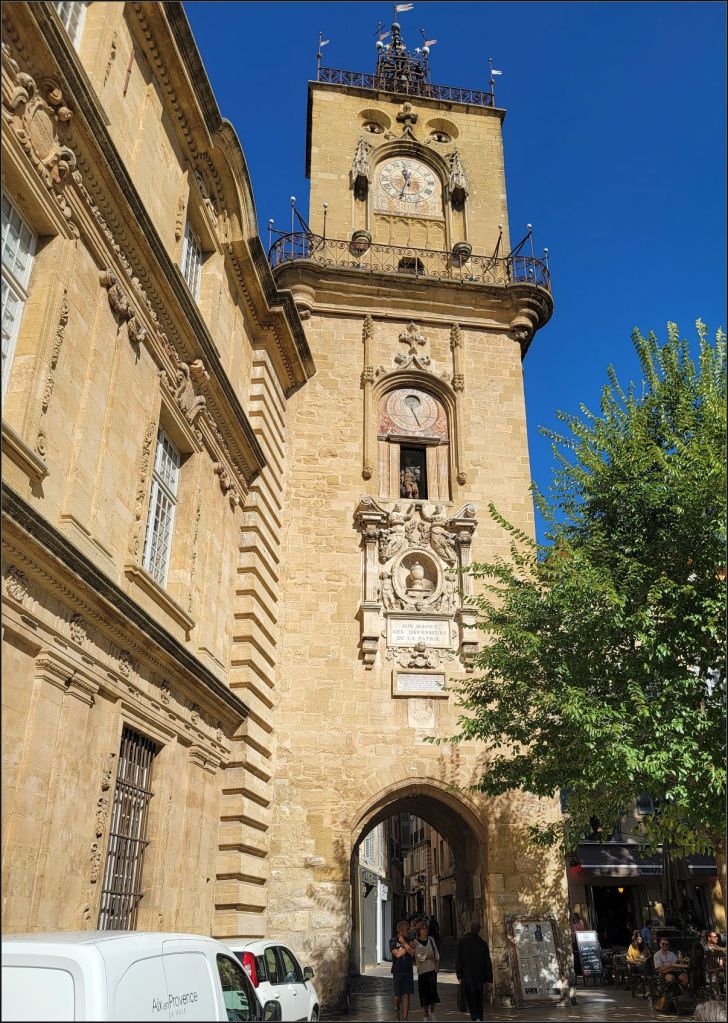
Another imposing building, Hotel de Ville was built adjacent to the Tower. Some of the richly ornated facades can still be seen, the old thick walls, and doors.
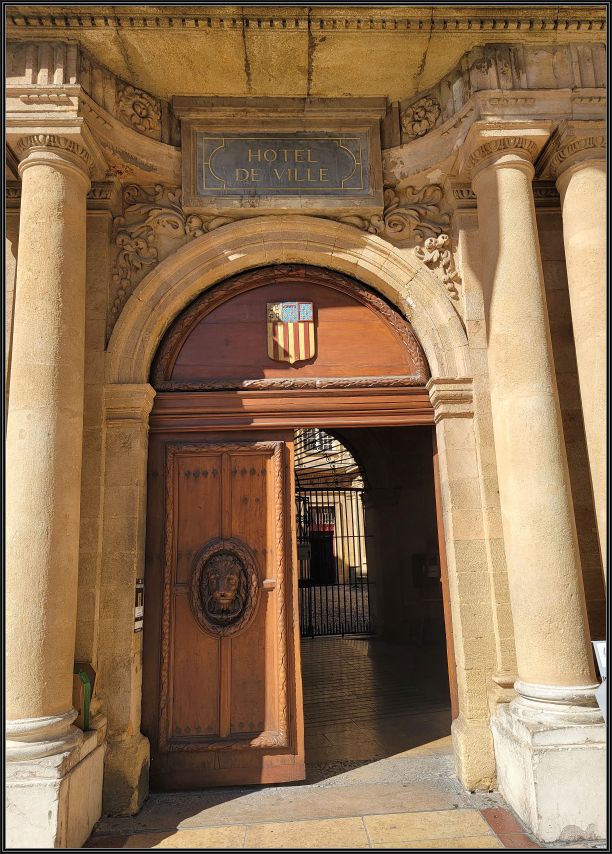
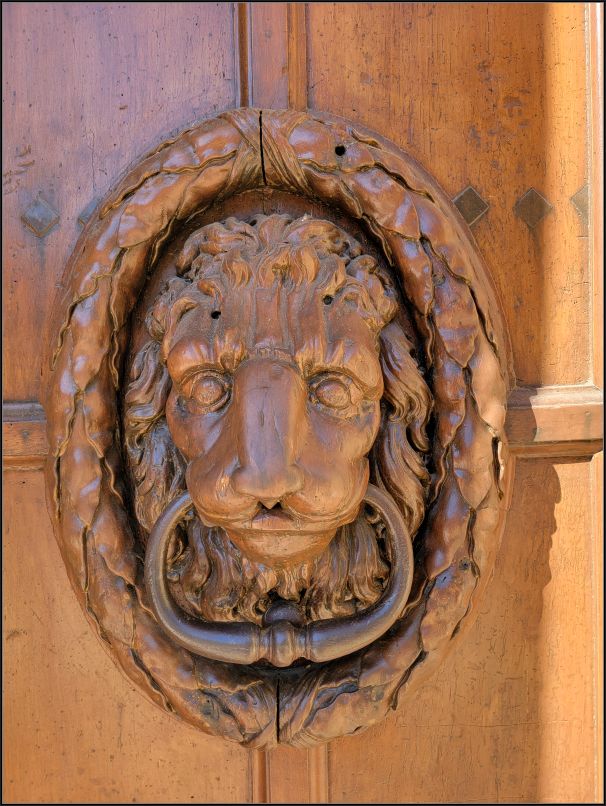

While Place de l’Hôtel de Ville takes the honors, a lively place with terraces, chocolateries, and other goodies, a place where people are strolling around, indulging themselves in various activities, not little was my surprise, when, turning my head over the shoulder to catch one more glimpse of the plaza, I found everything still. Contrary to the minute before when everything was so lively, it seemed that suddenly, the time had stopped for a second, and everyone was standing still, no one moving a single muscle.
Only the water continued to flow from the Town Hall Fountain through the four pipes held by the bearded faces from all four corners of a Roman column. Built in 1756, the fountain’s water was brought from the Pinchinats spring, via the Roman aqueduct, a reminder that it was the Romans who brought water to Aix, and not only.
Passing by the farmer’s market, we found suddenly a funny sculpture. The Boar fountain (a bronze reinterpretation of an Italian Renaissance marble by Tacca) represents a boar whose snout serves as a cannon. Local legend says that rubbing an animal’s nose brings you good luck. We found this very funny, similar with another legend from a different continent. In Havana, Cuba, there was a famous character El Caballero de Paris whose beard was very shinny from how many people rubbed it for good luck.
Following our way towards Cours Maribeau there were more fountains. Not all of them are cared for, and many have accumulated calcium, moss, or rust such as the Fountain of Lights. No wonder why, as the fountain is fed with hot water from the Bagniers spring, and the mineral waters build easily such formations. As the summer of 2022 was one of the hottest and driest ever in France, several fountains didn’t work, obviously, but I’m sure they would be a real treat when functioning.
Replacing an old fountain of a pyramid destroyed during the Revolution, the white marble Fountain of King René watches over the Cours Mirabeau, one of the most popular and lively places in the city.
Person of many titles, René of Anjou, count of Provence and of Piedmont, known as René I, and also king of Naples from 1435 to 1442 has his own special place. As the last count of an independent Provence, he became very popular while spending his last years in Aix-en-Provence, reason he is known in France as the Good King René.
Erected in 1651, the Fountain of the 9 guns is composed of two superimposing basins. It was a drinking fountain for the sheep on their transhumance from Arles to the Alps. This fountain was also one of the last used for domestic purposes, and listed as a historical monument since 1929.
Our stroll along Cours Mirabeau ended at the Place du General de Gaulle, where The Fountain of the Rotunda is located. This is the largest of all fountains in Aix-en-Provence, with a height of 12 meters, and 2 large basins. It is richly decorated with lions, dolphins, swans and children, and the three statues surmounting it represent Justice, Agriculture, and Fine Arts.
You can’t really walk 2 blocks without finding a historical building, or some intricacies, and we were overwhelmed by everything. While North America boasts a history of few hundred of years, Europe, in particular Provence, possesses a history of more the 2,000 years.


Although most of the buildings have been restored over time, all of the adorning figures show an obvious sign of aging, nevertheless, they are not less impressing. The last, but not the least, one of the most important historical landmarks we visited in Provence, is the Cathedral Saint-Saveur.
This cathedral is built on the site of an ancient Roman forum from the 1st century, and the legend says that was right on the foundations of an ancient temple dedicated to Apollo. The cathedral evolved between the 5th and 18th centuries, reason the architectural styles vary a lot, from Romanesque, to Gothic, and Baroque.
The octagonal baptistery built at the end of the 6th century is one of the rare antique baptisteries functioning in France, using the eight ancient granite and marble columns.
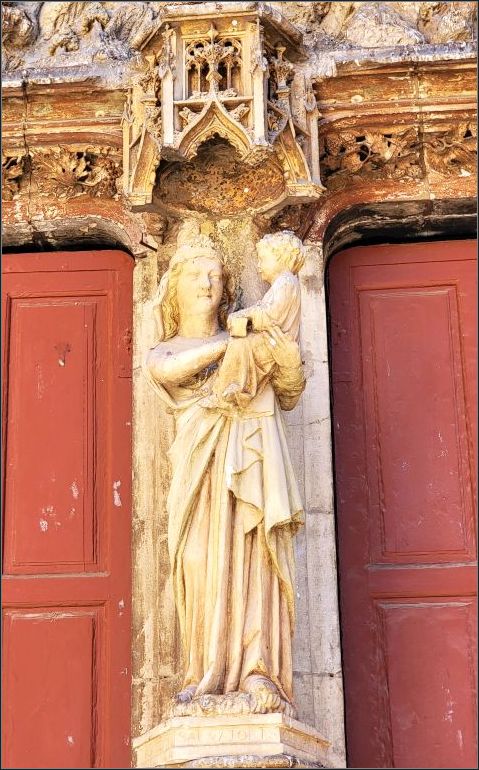
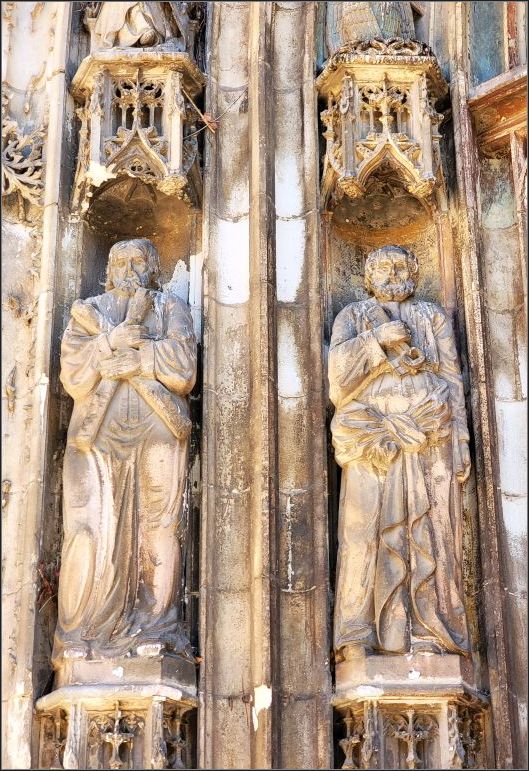

It was so hard to take us away from walking around this amazing city. The warm glow of the mid-day sunshine washed over us as we slowly made our way back to the parking lot. We had to say not necessarily good-by but rather see you soon, while we were driving to our next destination, Saint-Maximin-la-Sainte-Baume.
Tip(s) of the day:
* This is one of the sunniest cities in France, don’t forget your water, hat and sunscreen;
*Getting a digital map of all the attractions you want to see can be very handy. You can easily get distracted and lost between the countless alleys and pathways;
* Aix is famous for being the hometown of 19th-century French Post-Impressionist painter Paul Cézanne, and also home to Vasarely Foundation, the leader of the optical art movement, established in 1966.
~ visited in September 2022
If you like Provence, or France, you can check other posts of our ‘One week in Provence’.


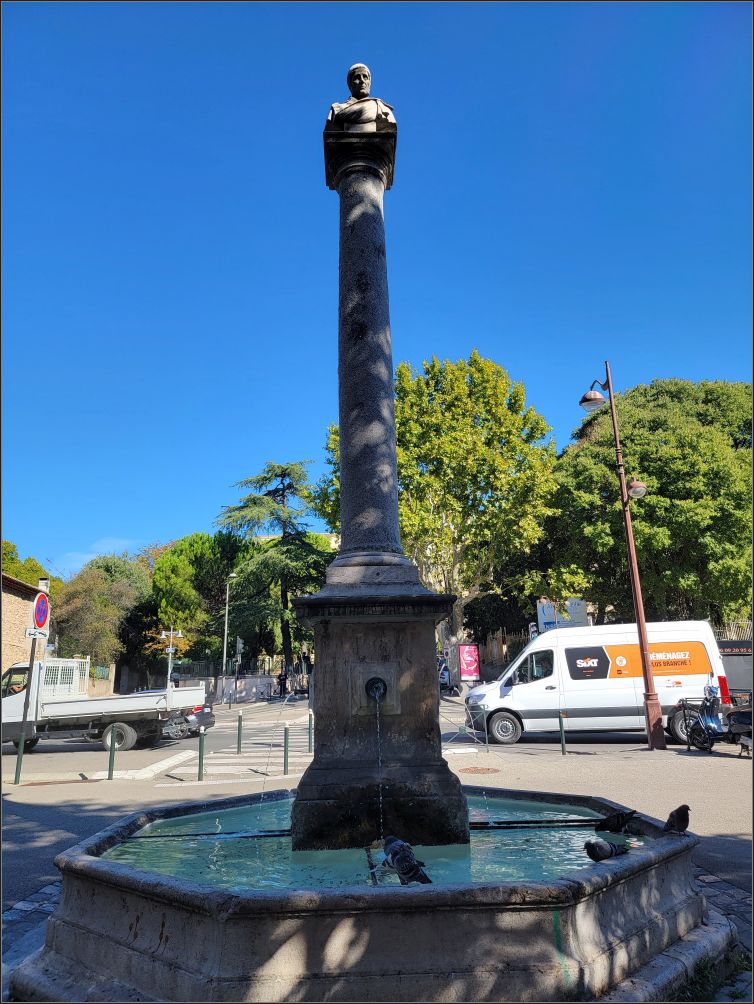




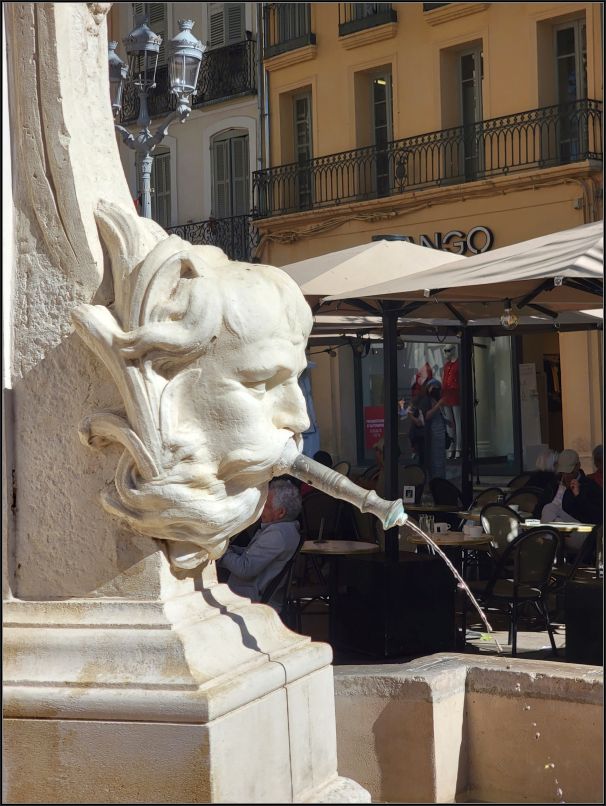

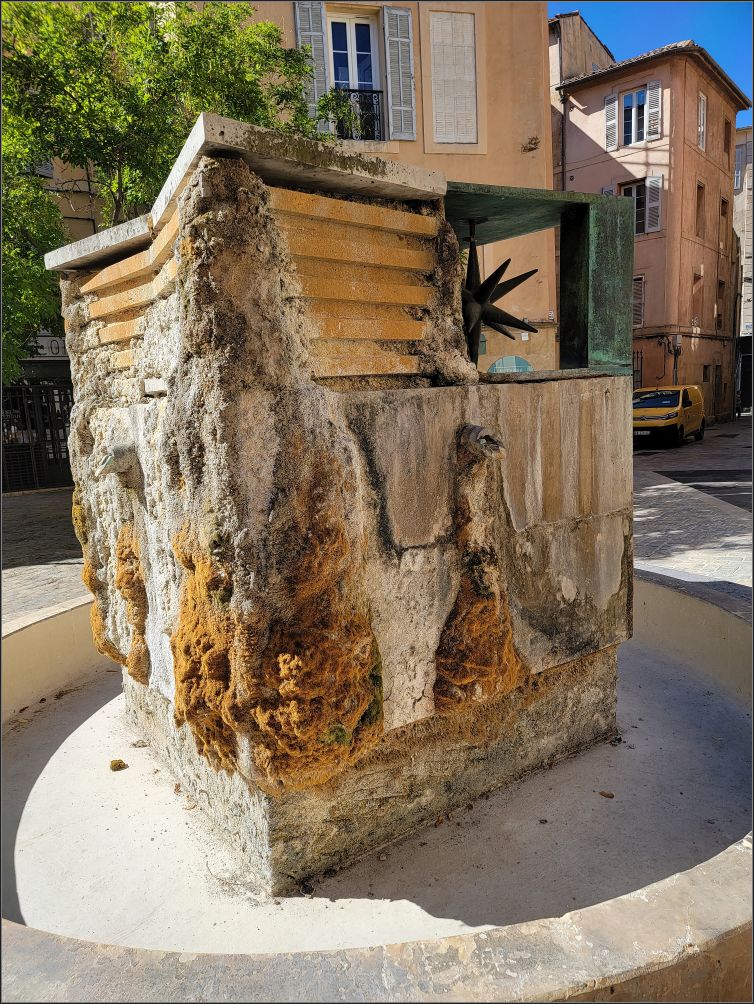





We transited through Aix, but did not spend much time there. Thanks for showing us what we missed Christie. That is a lot of fountains for sure. We love Provence and have been there 3 times. Have a great weekend. Allan
LikeLiked by 1 person
There are even more fountains in Aix, but we didn’t spend much time there, either. So much to see and so little time🙂
Have a great weekend you too! We are heading to Ottawa tomorrow, hopefully we can still find some of the ice sculptures not melted lol
LikeLiked by 1 person
So much history and so many fountains! Too bad they’re no restored, but they have a different character too when they let you see their age. I still think my favourite was the clock tower. Maggie
LikeLiked by 1 person
Indeed, my favourite one was the clock tower too😊 It is fascinating how they could build such mechanisms at that time, being able to work for so many centuries.
Have a lovely weekend!
LikeLike
This definitely caught my attention and we saw so many fountains there in Provence. Great images. Anita
LikeLiked by 1 person
Glad to bring you back great memories, Anita!
Christie
LikeLike
I spent about a week in Aix-En-Provence last summer so I recognized many of your objects in your photos. Amazing photos by the way. I found it interesting that you thought the tower reminded you of the tower in Sighisoara in Transylvania. The thing is, I was in Sighisoara 12 years ago and I thought the same thing. The thing is though that a lot of the European towers look alike. I also think SchneiderTurm in Konstanz, Germany is a bit similar. However, this tower and the one in Sighisoara are more similar. Anyway, it was an entertaining and interesting post. Thank you for bringing back some good memeories.
LikeLiked by 1 person
Glad to bring you back fond memories.
I’m pretty sure there are many more similar towers in Europe, it would be interesting to find more of them on our future trips🙂
Have a wonderful day!
LikeLiked by 1 person
A fine place indeed.
LikeLiked by 2 people
Thank you!
LikeLiked by 1 person
Hi Christie, here’s a coincidence for you. Last night we were planning our travel for the year and looking at a summer trip around the Med. I was just looking at the south of France and had just circled Avignon on the map, and wrote “Provence towns” next to it as a potential stop off. About three minutes later your post landed! So we are extra interested in this post and like the look of the city…it’s gone on the list. Thank you for the useful info…and great timing!
LikeLiked by 1 person
We did Nimes, Avignon, Orange about 10 years ago, now we followed Aix, Quinson, Moustiers Ste Marie, Verdon gorge, Castellane, St Paul de Vence to name a few of our stops. Provence is amazing, we would return in a heartbeat🙂 Happy planning!
LikeLiked by 1 person
Oh, it sure is a city of fountains galore (whether in working condition or not)! Of course I like the Rotunda Fountain, but the Boar Fountain is probably my favourite. What a lovely walk through a beautiful city – I love the old doors and statues!
LikeLiked by 1 person
The Boar fountain is a special one, it has so much character, isn’t it? I find so funny all these ‘”legends” about rubbing certain parts lol
We enjoyed every minute in Aix, and I didn’t even mention about the goodies from the farmer’s market..
Have a lovely week ahead🙂
LikeLike
Just 90 minutes from where I live and one of my favourite towns
LikeLiked by 1 person
What is not to love about Aix! I also loved that in 90 minutes (or so) we could go pretty much anywhere in Provence🙂
Thank you for stopping by!
LikeLiked by 1 person
My pleasure Christie
LikeLiked by 1 person
I love Aix; we have visited on several occasions and I would return in a heartbeat. Lovely photos and overview!
LikeLiked by 1 person
Thank you, Tricia!
Happy Monday🙂
LikeLiked by 1 person
This is such a great post! It was a wonderful tour. Your photos show the absolute beauty of Aix, and I enjoyed your insights.
LikeLiked by 1 person
Thank you for your kind comment🙂
LikeLiked by 1 person
I remember the boar in Florence. It’s nose was also said to bring you good luck as I recall and was well-polished from much rubbing. I couldn’t resist and rubbed its nose as well. 🙂 Thanks for the tour, Christie! –Curt
LikeLiked by 1 person
They are quite funny and they attract so many tourists, who can resist to rub a good nose🙂🙂
Cheers,
LikeLike
Laughing, Christie. Who can resist, indeed!
LikeLiked by 1 person
What a beautiful city to explore with so many fountains. Sounds like you had a lovely time just wandering around and soaking in the sights and the sun. Thanks for sharing. Linda
LikeLiked by 1 person
A lovely city, for sure! And I didn’t mention about the farmer’s market, with all sorts of cheese and sausages🙂
Happy Monday Linda!
LikeLiked by 1 person
I so enjoyed this calming walk through Aix-en-Provence, Christie, thank you. It is astounding how many fountains there are, and I really enjoyed seeing the variety and hearing a bit about each one. Lovely photos, too.
LikeLiked by 1 person
Thank you Jet for coming along!
Have a beautiful day🙂
LikeLiked by 1 person
We’re flying to Toulouse in October and that will be the closest we’ve been to this area. There’s just too much world, isn’t there? Great to be able to share it on here.
LikeLiked by 1 person
Too much world, and too little time😊 Hugs, xx
LikeLike
🤗💕
LikeLiked by 1 person
Don’t know if I’ll ever get there, but I’d like to.
LikeLiked by 1 person
Too much to see and too little time, but never say never🙂
LikeLiked by 1 person
what a wealth of things to photograph, and a wonderful job you did too!
LikeLiked by 1 person
Thank you, Andy! Aix was a wonderful and welcoming city. I would think it gets much busier in the high season, but the end of September was the perfect time for us, to get there.
LikeLike